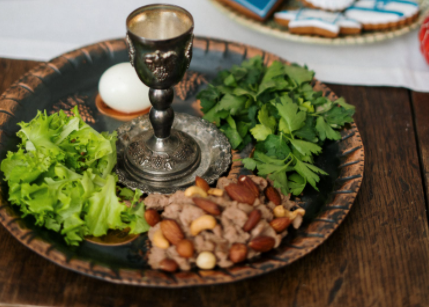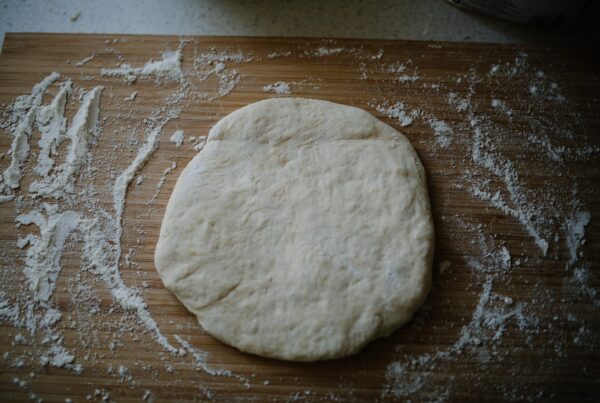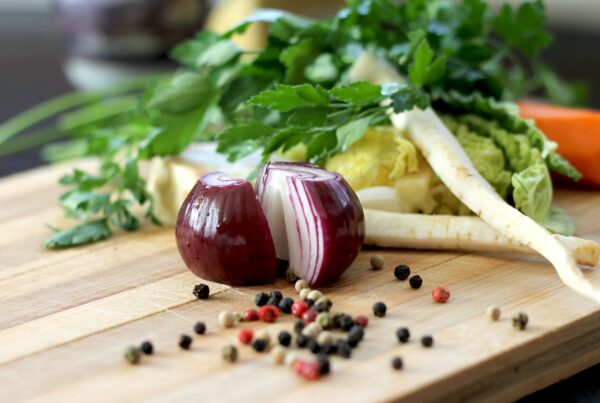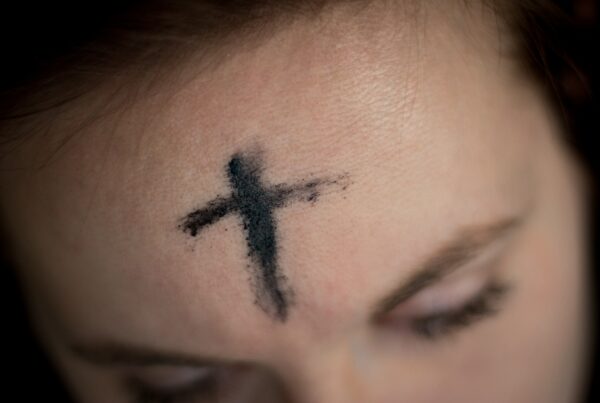Christians observe Holy Week—the week preceding Easter during which we remember the final days of Jesus’s earthly life—in a variety of ways. In Jewish tradition, this week includes the celebration of Passover. This is your invitation to learn more and experience the foods and significance of this holiday.
A s a Jewish child, my favorite holiday was Passover. My mother was a wonderful cook, so all of the extended family came to our house for a Seder dinner on the first night of Passover. This holiday is a time to celebrate the riches of all the things God commands us to do in order to commemorate his miracles. This includes special foods that are seen on the Seder plate and the retelling of the ten plagues that were brought upon Egypt in order to encourage Pharaoh to let the people of Israel be free. There are happy and sad songs we sing. It is just a part of the circle of life—of the many celebrations and remembrances—that growing up Jewish entails.
Passover commemorates the biblical story of the exodus, whereby God, with his servant Moses, freed the Israelites from slavery in Egypt. The celebration of Passover is prescribed in the book of Exodus in the Old Testament (Exodus 12:14; 13:3). Seder literally means order, and we follow the same ancient order every year by using a book called a haggadah, which means “telling.” Exodus 13:8: “And thou shalt tell thy son on that day, saying: It is because of that which the LORD did for me when I came forth out of Egypt.”
For kids especially, Passover is a time full of fun and mystery. The youngest child, which was usually me, asked the Four Questions of the father or oldest male. The questions are based on why this night is different from all other nights—and it is a very special night full of meaning, traditions, songs, and wonderful food.
The Passover Meal
For the Passover meal, my mother had a lot of preparations to make. There are different cutlery, glasses, wines, plates, and food that are particular to the occasion.
The seder plate is usually set in prominence in the middle of the table and contains a number of symbolic foods. A piece of roasted meat represents the lamb that was the special sacrifice on the eve of the exodus from Egypt. A hard-boiled egg represents the pre-holiday offering that was brought in the days of the Holy Temple. Bitter herbs remind us of the bitterness of the slavery of our forefathers in Egypt. Charoset (see recipe at the end of this post), a mixture of apples, pears, nuts, and wine, resembles the mortar and brick made by the Jews when they toiled for Pharaoh. Parsley, called karpas in Hebrew, alludes to the backbreaking work of the Jews as slaves; the Hebrew letters of karpas can be arranged to spell the word perech, which means “backbreaking work.”
Related: What Can the Seder Supper Teach Us about the Lord’s Supper?
The four cups of wine that we drink throughout the evening represent the four expressions of deliverance promised by God in Exodus 6:6-7: “I will bring out,” “I will deliver,” “I will redeem,” and “I will take.”
The matzo bread is symbolic of the three groups of Jews: Priests, Levites, and Israelites. The bread also commemorates the three measures of fine flour that Abraham told Sarah to bake into matzo when they were visited by the three angels (Genesis 18:6).
The afikoman is especially fun for kids. This is a half-piece of matzo that is broken in two during the early stages of the Seder meal and set aside to be eaten as a dessert after the meal. The leader of the Seder hides the afikoman and any children that are present can find it, whereupon they receive a small prize or reward.
Based on the Talmud (the body of Jewish civil and ceremonial law and legend), the afikoman is a substitute for the Passover sacrifice. The Talmud states that it is forbidden to have any other food after the afikoman, as it is a reminder of the taste of the Israelites’ redemption.
Dayenu (“It Would Have Been Enough”) is an upbeat traditional Passover song that I love. My mother called it fraylich, the Yiddish word for “happy.” The song’s stanzas list a series of kindnesses God performed for the Jewish people during and after the exodus. After each kindness, dayenu is sung, meaning “it would have been enough.” As an example:
If God had split the Sea for us and had not taken us through it on dry land, it would have been enough.
If God had taken us through it on dry land and had not pushed down our enemies in the Sea, it would have been enough.
If God had pushed down our enemies in [the Sea] and had not supplied our needs in the wilderness for forty years, it would have been enough.
Jesus and the Last Supper
It is noteworthy that Jesus and his disciples were Jews, and they observed the Passover celebration at the Last Supper. Some Christians have a Passover Seder to commemorate God’s powerful, awesome act of redemption for all peoples through his Son, Jesus the sacrificial Lamb. For me as a Jew, Passover is what God commands us to do: gathering together with family or friends to remember his everlasting goodness and kindness to his people.
Featured recipe
Charoset
Although this mixture is very sweet, it represents the mortar and bricks that the Jews used to build the pyramids for the Egyptians. It was always a real treat to put a spoonful of charoset between two small pieces of matzo and eat it like a sweet sandwich.
Recipe courtesy of Chabad.org.
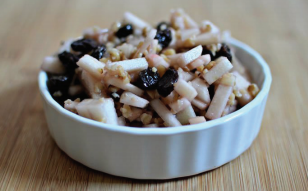
Ingredients
- 1 pear
- 1 apple
- 1 cup chopped or ground walnuts
- ½ cup raisins
- ½ cup sweet red wine
- ¼ tsp. cinnamon
- ¼ tsp. nutmeg
Instructions
- Peel and finely dice the apple and pear.
- Mix in the ground nuts, raisins, wine, and spices.
- Refrigerate until serving.
- Add a little more wine immediately before serving.
Shelly Parkhurst
Shelly Parkhurst was born in Detroit, Michigan, to Jewish parents. She now lives with her husband in Grand Rapids, Michigan, and is a semi-retired graphic designer. She attends City Chapel, a union church plant of the Reformed Church in America and the Christian Reformed Church in North America.
